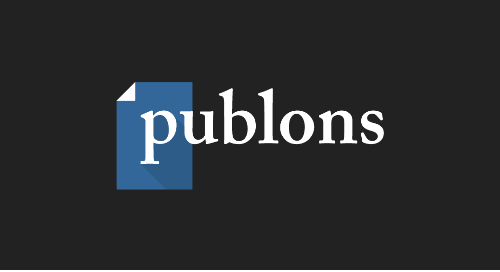a-wander-in-the-similarity-jungle-with-ithenticate
July 01, 2018
Amongst the broad range of plagiarism detection software, between Turnitin and PlagScan, and right before CopyScape, we find iThenticate, widely used across the world of peer review by editorial office managers, editors, and diligent authors. Able to scan the entire World Wide Web and compare all online publications to the submitted manuscript in just about the duration of your favorite song, iThenticate has become essential to successfully carrying out the peer-review and publication processes within the boundaries of publishing ethics.
iThenticate is usually integrated within online peer-review portals (ScholarOne, Editorial Manager, and such) and it is the user’s choice to have it run automatically after submission for every submitted manuscript, or to run the scan manually only for specific papers, although most journals opt for the automatic screening which is more effective in identifying potential similarity problems immediately after submission.
But how to use iThenticate for early resolution of cases of similarity?
If running the software is uncomplicated, the interpretation of the results is where we prove ourselves worthy of this multiuse tool that serves as our compass, magnifying glass, and machete.
The first step (the Compass) is where we decide which direction to take based on the overall similarity percentage provided by iThenticate after the initial screening. In general, anything with an overall similarity percentage of over 15-20% makes us take the path to the reading of the detailed similarity report, whilst anything under 15% is normally considered for review. However, some managing editors recommend reading the detailed report for every submitted manuscript, regardless of the overall percentage, as sometimes even a low similarity index can indicate high similarity to individual manuscripts—which leads us to step two.
In the second step (the Magnifying Glass), once we have established that we need to read the detailed report, we access it and consider individually the similarity index to each listed source. As a general rule, we tend to look in detail at any individual similarity of 4-5% or above, including where the similarity appears within the body of the text and what the online source is. If the similarity is caused by the presence of single words spread across the paper, or short sentences in different points of the paper, our concerns tend to dissolve, especially if the similarity is recorded within the Methods section. As a brilliant managing editor once told me, there aren’t many ways of saying “I put the bugs in a jar and shook it”. However, when the individual similarity is above 5% and it is caused by the presence of entire paragraphs which have been blatantly copied and pasted from other publications, that is when we consider the similarity unacceptable and we need to take direct action.
Third step (the Machete): identify the type of similarity and eradicate these. Plagiarism? Self-plagiarism? Salami slicing? Or just bad referencing of sources? Whatever the issue, authors need to be contacted to clarify the situation and, if needed, asked to rephrase the parts of text we consider unacceptable. In some cases, rephrasing of the affected parts would not benefit the authors or the manuscript, in which case editors can choose to reject. Whichever path is taken, it is recommended that authors are provided with a detailed explanation that can clarify our point and educate them for the preparation of future submissions.
This process requires, just like everything else, practice and a fair amount of patience, especially when the system tries to trick us by including within the similarity index unnecessary text parts (et al., in-text references, years, standard formulas) or considering sources that Wiley would not consider in a similarity scan (e.g., certain types of prior publications by the same submitting authors such as meeting abstracts, PhD theses, and preprints).1
This aside, iThenticate remains an optimal tool to approach similarity screening and analysis, both for enthusiastic first-time wanderers and for experienced explorers of the similarity jungle. No plagiarism shall pass.
Thanks to Gareth Watkins (Associate Managing Editor, Wiley), Di Sinclair (Managing Editor, Wiley) and the Editors of the Royal Meteorological Society portfolio for their help, advice and support.
1 More information on accepted types of prior publications and how to recognize a case of unethical duplicate publication can be found on Author Services, along with Wiley policies on preprints.








